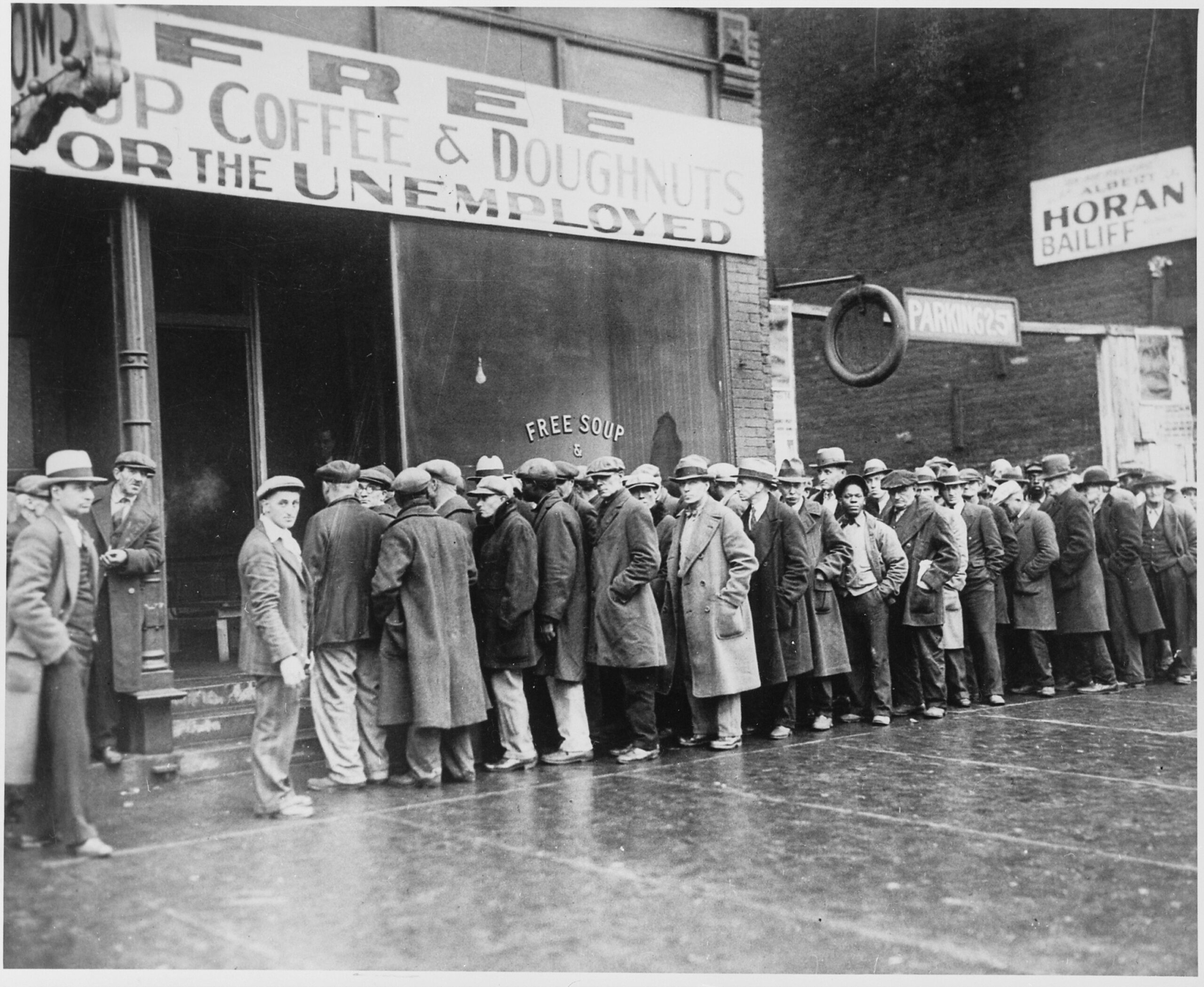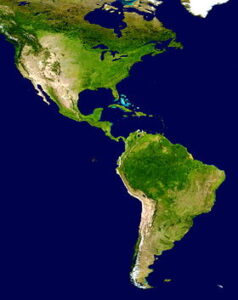After the stock market crash of 1929, the American economy spiraled into a depression that would plague the nation for a decade.
The stock market crash of 1929
The value of the US stock market nearly doubled in a frenzy of speculative buying in the eighteen months before the crash began on “Black Thursday,” October 24, 1929. On that day, and on “Black Tuesday,” October 29, panic set in as millions of shares of stock traded at ever-falling prices.
The October 1929 downturn was only the beginning of the market collapse. By mid-November the stock market had lost a third of its September value, and by 1932—when the market hit bottom—stocks had lost ninety percent of their value. A share of US Steel which had sold for $262 before the crash sold in 1932 for $22.
The stock market crash signaled the beginning of the Great Depression, but it was only one factor among many root causes of the Depression. A weak banking system, further collapse in already-low farm prices, and industrial overproduction each contributed to the economic downturn. The disastrous 1930 Hawley-Smoot Tariff (which raised average tariff rates to nearly 60 percent) caused America’s international trading partners to retaliate by raising rates on US-made goods. The result was shrinking international trade and a further decline in global economies.11start superscript, 1, end superscript
The Great Depression
As the effects of the Depression cascaded across the US economy, millions of people lost their jobs. By 1930 there were 4.3 million unemployed; by 1931, 8 million; and in 1932 the number had risen to 12 million. By early 1933, almost 13 million were out of work and the unemployment rate stood at an astonishing 25 percent. Those who managed to retain their jobs often took pay cuts of a third or more.22squared
Out of work Americans filled long breadlines, begged for food, or sold apples on street corners. A Chicago social worker wrote that “We saw Want and Despair walking the streets, and our friends, sensible, thrifty families, reduced to poverty.”
More than a third of the nation’s banks failed in the three years following 1929.44start superscript, 4, end superscript Long lines of desperate and despairing people outside banks hoping to retrieve their savings were common. Many ordinary citizens lost their life savings when banks failed.
Farmers were hit particularly hard by the crisis. On top of falling prices for crops, a devastating drought in Oklahoma, Texas, and Kansas brought on a series of dust storms known as the Dust Bowl. In the South, sharecroppers—both white and black—endured crushing poverty and almost unimaginable degradation. African Americans suffered significantly higher levels of unemployment than whites due to pervasive racism.55start superscript, 5, end superscript
The financial crisis was not limited to the United States. Countries in Europe and around the world experienced the depression. Hitler’s rise to power in Germany was fueled in part by the economic slowdown, and throughout the 1930s international tensions increased as the global economy declined.66start superscript, 6, end superscript
Hoover’s response to the crisis
President Hoover initially met the economic downturn from the perspective of his long-held voluntarist principles—that is, his belief in minimal government interference in the economy, as well as a conviction that direct public relief to individuals would weaken individual character, turn people away from the work-ethic, and lead them to develop a dependency on government handouts. By 1931 Hoover reversed his earlier approach and embraced government intervention in the economy. The 1932 Reconstruction Finance Corporation (RFC) authorized the lending of $2 billion to banks, railroads, and other privately held companies, and in July 1932 the federal government appropriated $300 million for the nation’s first relief and public works projects.77start superscript, 7, end superscript
For many, however, these actions were too little, too late. Shantytowns of makeshift hovels—disparagingly labeled “Hoovervilles” in disgust with the president’s inaction in the face of crisis—grew up across the country in public parks and in vacant lots, as the out-of-work, unable to pay mortgages or rent, were evicted from their homes. Trouser pockets pulled out to signal the lack of money within them were “Hoover flags.” Newspapers used for warmth by the homeless were “Hoover blankets.”88start superscript, 8, end superscript
In November 1932, Franklin D. Roosevelt was elected president in a landslide, winning 57.4% of the vote to Hoover’s 39.7%. (source)
What do you think?
What caused the stock market crash that began in October 1929?
Do you think President Herbert Hoover’s response to the economic downturn that began in 1929 was adequate?
What do you think your life would have been like if you had lived during the Great Depression?



